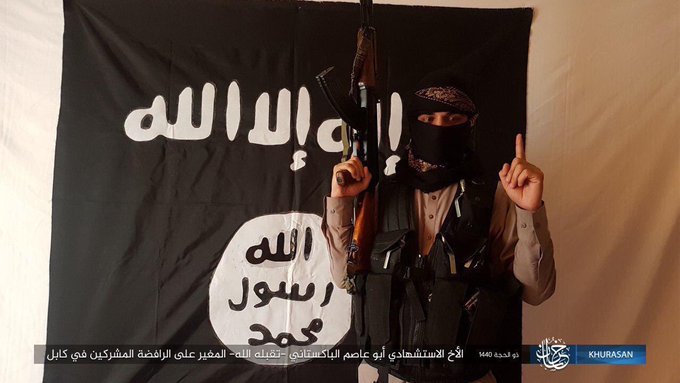By Mehwish Rani
Foreign fighters became a subject of the global security debate when many young Europeans, male and female, started travelling to Syria to take part in the conflict there in 2014 and 2015. In Pakistan, the foreign fighter phenomenon has a longer history, having emerged in the 1980s during the Soviet-Afghan War. From 1979 to 1989, thousands of Pakistanis participated in the Afghan jihad. In the 1990s, when the Afghan war ended, many veteran jihadists of the Afghan conflict began traveling to Kashmir to support the newly metastasizing insurgency there.
The movement of Pakistani fighters to Afghanistan and Kashmir was the outcome of a number of factors including shared ethnic and geographical links to the conflict zones, and the support of veteran jihadists. In Afghanistan, thousands of foreign fighters sought to participate in the anti-Soviet insurgency supported by three allies: Pakistan, the US, and Saudi Arabia. The state support and proxy war led to the establishment of new structures ranging from thousands of madrassas and training camps to the creation of a global ideology of jihad against non-believers, or infidels. As regards Kashmir, the conflict underlined Pakistan’s national security imperatives and naturally attracted passive state support.
The second factor that impelled the growth of Pakistani foreign fighters in Afghanistan and Kashmir was geographic proximity. Pakistan shared a direct land border with both Afghanistan and Indian-administered Kashmir that enabled the flow of jihadists. With Afghanistan, the porous border featured multiple crossing points without security checks, increasing the possibility for a flourishing cross-border jihadist movement.
The third factor was a common heritage and ethnic identity that enabled Pakistan-based jihadists to cross the border into neighbouring Afghanistan or Indian-administered Kashmir. A substantial number of Pakistani foreign fighters in Afghanistan were members of the Pashtun ethnic group and lived in the tribal areas near the Afghan border in Khyber Pakhtunkhwa and Baluchistan provinces. Many had relatives in Afghanistan and considered Afghanistan their second home. Likewise, a similar trend was observed in Pakistan-administered Azad Kashmir, where families were divided across both sides of the border. Many Pakistanis rejected India’s occupation of Kashmir and saw it as an important site of struggle for human rights and political freedom.
Fourth, some foreign fighters in Afghanistan and Kashmir were “career jihadists”— i.e. they had previous experience of fighting in such conflicts and had developed local connections. Being well-trained in guerrilla warfare and knowledgeable about the terrain, the individuals returned to these conflicts year after year. These return patterns are also evident in the post-US invasion of Afghanistan, when the same foreign fighters who took part in Soviet-Afghan war later returned to fight ‘another army of infidels’ that had attacked Afghanistan.
Moreover, a fifth factor was the linkage between influential Pakistani jihadi seminaries and conflicts abroad. The jihadi veterans of the Soviet-Afghan war and 1990s Kashmir insurgency maintained substantial influence in religious schools where they continued to promote jihad. Groups like Jamat-e-Islami, Jamiat Ulema-e-Islam, Jamat-ud-Dawa, Harkat-ul-Mujahideen and Jaish-e-Muhammad are a few examples. They maintained broad networks of religious schools, political offices, and charity wings to propagate jihad in Kashmir and Afghanistan. The veterans radicalized young boys, put them in contact with foreign leadership, and facilitated logistics for Afghanistan or Kashmir.
These five factors generally explained Pakistani participation in jihad abroad up until the 1990s and into the 2000s. However, in recent years, a shift has emerged with the rise of Daesh, or the so-called ‘Islamic State.’ According to some estimates, since establishing a caliphate, Daesh has recruited more people in Pakistan than the Afghan Taliban or pro-Kashmir jihadis. Although the South Asian country is geographically disconnected and culturally distinct from Syria, the Internet has played a pivotal role in bringing Pakistanis to foreign battlefields, highlighting the increased importance of online spaces as recruitment grounds.
Using the Internet, Daesh successfully implanted itself in the local milieu by launching its propaganda in Urdu and Pashto, and by presenting itself as a unique group, which fulfilled religious prophecies. It heavily used Quranic verses in its web magazine articles, audio, and other messaging. In doing so, Daesh attracted Pakistani fighters who generally had no history of going outside the region to take part in jihad.
Through Telegram channels and other communication platforms, Daesh also tapped unexploited, new groups, particularly women. Despite never being active in Pakistani jihad, a significant number of Pakistani women began to travel to Syria and also worked as recruitment agents at home radicalising a generation of young so-called ‘jihadi brides.’ A prominent case was that of Bushra Cheema, a city-dweller and university graduate who went to Syria in 2016 along with her four children after being in contact with Daesh leadership in Syria through social media platforms.
Through its eye-catching graphics and viral digital videos, Daesh also appealed to an older generation of fighters who were disappointed with the stalemates in Afghanistan and Kashmir. Indeed, when Daesh established its global caliphate, foreign fighters who had been going to Kashmir or Afghanistan for years found the Syrian conflict larger and jihad-e-afzal (a “better or more preferable jihad”) because it was staged at the global level. Daesh had territory, a state, delivery of services and much more—it was “more real” in a way that neither the Afghan Taliban nor Kashmiri insurgents could match.
In conclusion, the Internet has transformed the Pakistani jihadi landscape by giving access to far off conflicts, and provided new settings for its growth and movement. While the previous iteration of jihad carried out by Pakistani fighters was concentrated in Afghanistan and Kashmir, the new wave has increasingly relied on the Internet and digital tools to exist and grow.
Mehwish Rani is a graduate of the International Master in Security, Intelligence and Strategic Studies (IMSISS), a 24 month Erasmus Mundus Joint Master Degree (EMJMD), awarded by a consortium of European universities – University of Glasgow (UK); Dublin City University (Ireland); Charles University in Prague (Czech Republic), and a former VOX-Pol intern.
